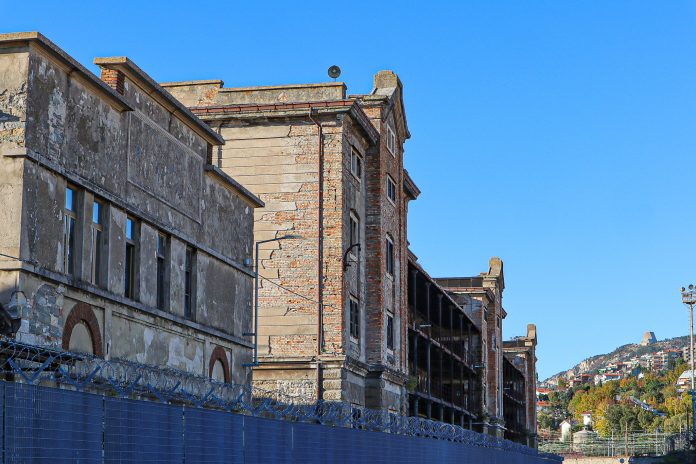by InTrieste
On Monday evening, against the backdrop of the historic Porto Vecchio, a new documentary will delve deep into the layered history of this Adriatic port city. UNDERTS, directed by Andrea Crevatin and curated by historians Debora Desio and Massimo Sgambati, takes viewers on a chronological journey through Trieste’s story, stretching from the Paleolithic era to the complex political realities of October 26, 1954, when Trieste was ceded back to Italy.
Screening in the evocative Sala Luttazzi at Magazzino 26, UNDERTS aims to challenge and inform. Made possible by the voluntary support of local organizations, including A_Lab Srl Liquid Media, the Storiographic Association, and the Adriatic Speleological Society, the film is the latest contribution to “A Light Always On,” a cultural series organized by the Trieste City Council’s Department of Culture.
The premiere arrives at a pivotal time, with 2024 commemorations sparking reflections on the city’s identity. “Trieste is a unique case,” notes Desio. “A small, clearly defined territory with a concentration of historical events as intense as any major nation, yet the city’s residents have rarely had the chance to steer their own story.” For centuries, the city has been a cultural melting pot, its fate shaped by shifting political tides and foreign military interventions.
The documentary poses essential questions: How did the people of Trieste respond to this turbulent history? What traces remain in the collective psyche of a population that, while outwardly cheerful and cosmopolitan, is marked by centuries of political upheaval?
Trieste’s many layers—its multicultural, multi-religious, and multi-ethnic character, its legacy as a home for renowned thinkers and writers—often reveal themselves only to those who linger and observe. “It’s easy to mistake Trieste’s quiet caution as mistrust,” says Sgambati, “but this is a city that protects itself, a place where prudence and reserve are hard-earned.”
UNDERTS weaves the narratives of everyday citizens who lived through 20th-century events, sharing stories rarely told: family anecdotes, neighborhood histories, and personal memories that reveal a different side of Trieste. The filmmakers worked with historians to contextualize the 20th century within the city’s earlier epochs, ensuring that the film serves as more than just a history lesson—it is, as Sgambati describes, “a shared experience.”
A symbolic turning point in the documentary is the city’s underground, a silent, hidden realm that Crevatin uses as a metaphor for Trieste’s complex identity. “The city’s subterranean spaces hold its secrets, revealing themselves only to those who approach with care and curiosity,” he explains.
The premiere, free to the public, has been organized by the Adriatic Speleological Society with support from a host of local organizations. The production was also facilitated by access to sites provided by institutions such as the Superintendency of Friuli Venezia Giulia, the Regional Press Office, the City of Trieste’s Archives Office, the Winkelmann Museum, and several regional historic and military centers.
In a city shaped by its past, UNDERTS seeks to build a bridge to the present by giving voice to its residents. The premiere promises not only a deeper look into Trieste’s unique identity but also an invitation for the audience to view history through the eyes of those who have lived it.





























